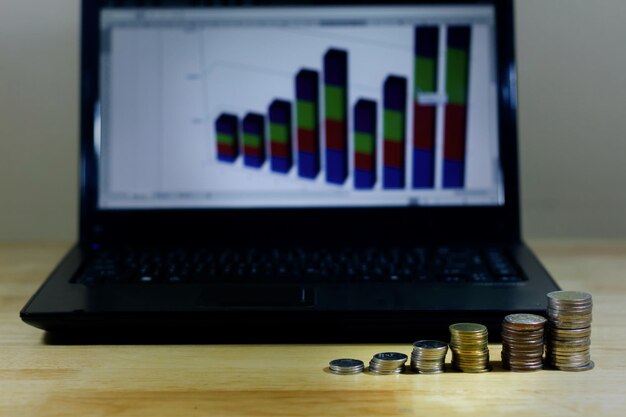How Often Does Apple Pay Dividends? Everything You Need to Know
When it comes to investments, few companies hold as much allure as Apple. As a tech giant that continues to break ground in numerous industries, Apple Inc. also piques investor interest due to its policies concerning dividend payouts. If you've ever wondered, "How often does Apple pay dividends?" you're not alone. Let’s dive into this topic to unravel essential insights and practical knowledge around Apple's dividend payout practices.
🌟 A Step into Apple's Dividend History
To understand Apple's current dividend payment strategy, it’s useful to take a brief trip down memory lane. Historically, Apple didn’t always pay dividends. In fact, the company's primary focus was on reinvesting its profits back into business growth. That all changed in March 2012 when Apple announced it would resume dividend payments after a hiatus of nearly two decades. This move was seen as a nod to shareholders looking for additional returns on their investments beyond capital gains.
📅 How Regularly Does Apple Pay Dividends?
Apple follows a predictable and consistent timeline for dividend payments, typically distributing dividends on a quarterly basis. This means shareholders can expect dividend payouts four times a year, aligning with the typical fiscal quarters. Below is a simple breakdown of the typical announcement and payout schedule:
- Announcement of Dividend: Generally occurs when Apple declares its financial results, once every quarter.
- Ex-Dividend Date: Investors must own the stock by this date to receive the next dividend.
- Record Date: Only shareholders on record by this date are eligible for the dividend.
- Payment Date: This is when the actual payment is made, which usually follows the announcement by a few weeks.
📈 Why Does Apple Pay Dividends?
Investor Confidence and Attraction
Paying dividends is one way Apple keeps its investor base happy. Dividends represent a tangible return on investment for shareholders and can significantly improve investor sentiment.
Growth Stability
Another rationale behind dividend payments is the company's steady performance and income growth. By paying consistent dividends, Apple signals financial health and stability to the market.
Tax Considerations
Apple also considers tax implications, as dividends can be a more tax-efficient way to return value to shareholders compared to share buybacks, depending on legislative conditions.
💼 Key Components of Apple’s Dividend Policy
Apple's dividend policy isn't just about payments; it's strategic. Below are some of the core components:
- Sustainability: Apple aims for a sustainable dividend payout, maintaining ample liquidity to support its innovation-driven business model.
- Growth Commitment: Balancing dividends with investment in research, development, and other growth pursuits.
- Financial Health: Ensuring that dividend payments do not hinder the company's ability to manage debt or engage in other strategic activities.
📊 Impact of Dividends on Apple’s Market Perception
When a juggernaut like Apple pays dividends, it profoundly impacts market perception and can attract different types of investors. Dividend-focused investors tend to prioritize stocks with regular dividend payments, whereas growth-centric investors might look toward capital gains. Apple’s ability to appeal to both types adds another layer to its investment narrative.
🔍 Factors Affecting Dividend Decisions
Various elements influence Apple’s decisions regarding dividend payments:
- Earnings Performance: Strong earnings can lead to higher dividend payouts, reflecting the company's robust financial status.
- Economic Conditions: External economic factors, such as market downturns or macroeconomic instability, might affect dividend decisions.
- Regulatory Changes: Shifts in tax legislation or corporate regulation can also impact how and when dividends are distributed.
🌿 Environmental, Social, and Governance (ESG) Considerations
Apple's dividends are also part of a larger strategic alignment with its ESG goals. By maintaining a balanced approach to dividends and sustainable business practices, Apple supports long-term corporate responsibility, aligning with shareholder values that increasingly prioritize ESG factors.
📝 Summary: Your Quick Reference on Apple's Dividends
- Dividends Frequency: Quarterly
- Key Dates: Announcement, Ex-Dividend, Record, Payment
- Influences: Earnings, Economic conditions, Regulatory changes
- Strategic Factors: Investor confidence, Growth commitment, Financial health
- ESG Alignment: Balancing dividends with sustainability goals
🔮 Future Prospects: What Investors Might Expect
Looking ahead, Apple's ability to maintain smooth dividend payouts rests on multiple factors, including its continued dominance in tech innovation, ability to navigate economic uncertainties, and adept financial management. Investors should anticipate consistent quarterly payments if these conditions hold.
By being mindful of the evolving landscape—financial, technological, and regulatory—investors can position themselves to take full advantage of Apple's dividend strategy.
🗂️ Practical Tips for Dividend Investors
- Stay Updated: Regularly check Apple's financial announcements for the latest dividend news.
- Mark Key Dates: Be aware of the ex-dividend and record dates to ensure eligibility for the next dividend payout.
- Diversify: While Apple's dividends are appealing, consider diversifying your investment portfolio to manage risk and optimize potential returns.
In conclusion, Apple's dividends not only appeal due to their regularity and consistency but also because they reflect the company's strategic financial acumen. Whether you're a seasoned investor or a newbie trying to understand the landscape, Apple's dividend strategies offer a fascinating look into how a successful company navigates complex shareholder expectations while maintaining growth and sustainability. Keep these insights handy as you explore investment opportunities with Apple and similar companies. 🍏
